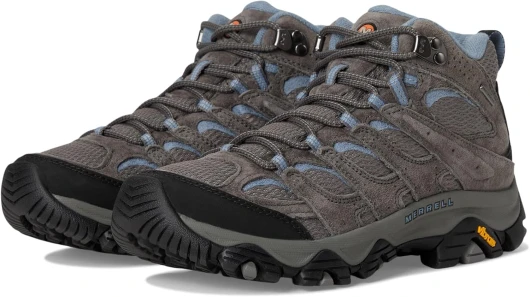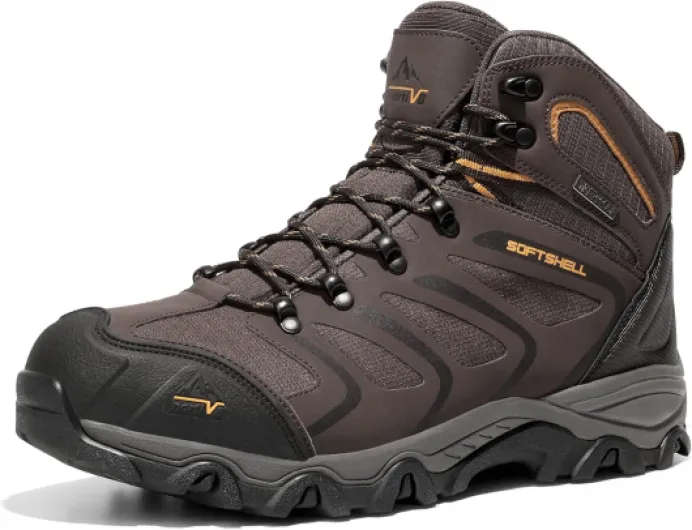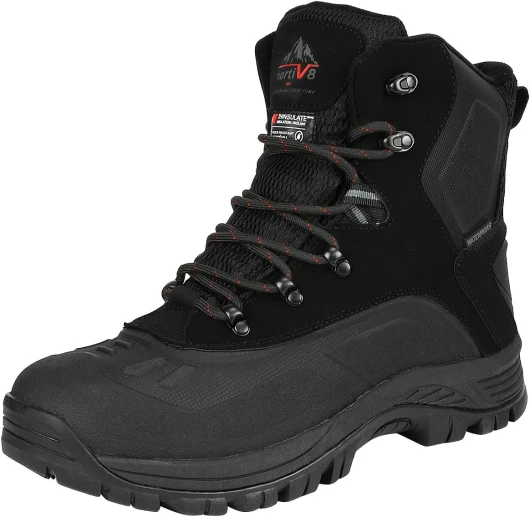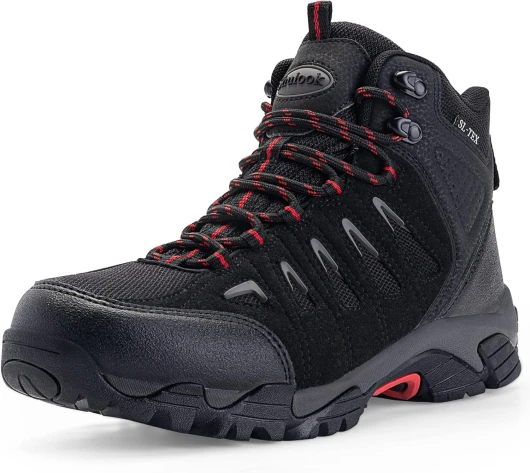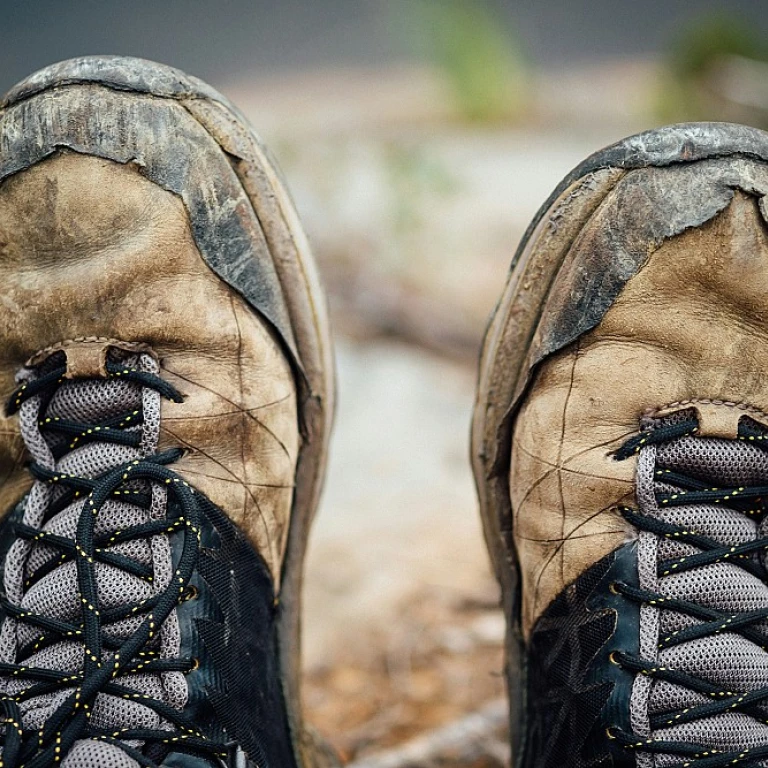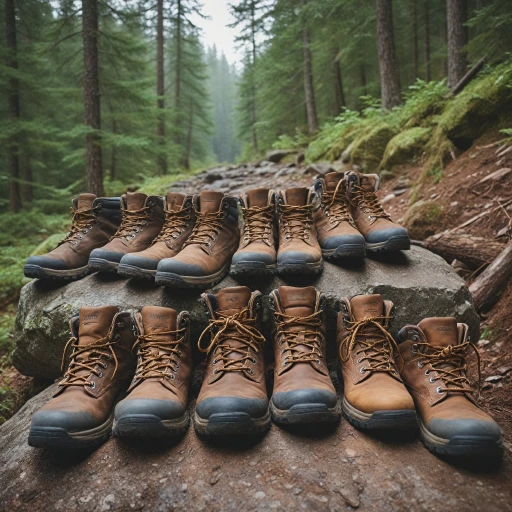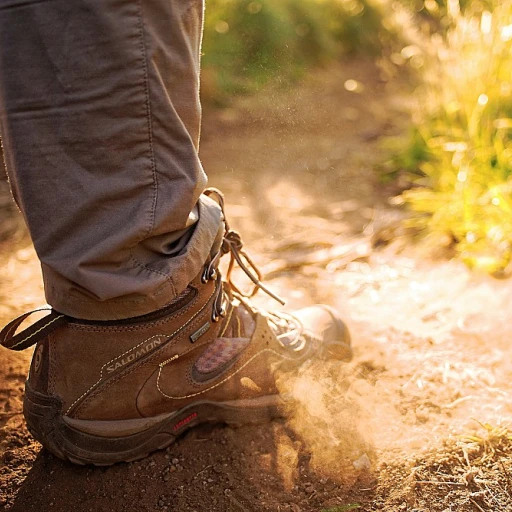
Understanding the Basics
When it comes to selecting hiking footwear, the choice often boils down to choosing between hiking boots and hiking shoes. Understanding the differences between these two types is crucial for any outdoor enthusiast aiming for a successful adventure. Hiking boots, often considered the best option for longer or more challenging trail adventures, provide greater ankle support and protection against rugged terrain. They typically feature a high cut, which is beneficial for maintaining stability over uneven surfaces.
Conversely, hiking shoes are designed to be lighter and more flexible. Ideal for day hikes and less demanding paths, these shoes offer greater comfort and breathability, making them suitable for covering fewer miles with ease. If your journey involves primarily well-maintained trails, trail runners or trail running shoes might also be worthy considerations due to their lightness and adaptability.
With the escalating popularity of outdoor activities, the types of hiking footwear available on the market have diversified significantly. For those with specific needs, options like mountaineering boots and backpacking boots offer specialized solutions. Nevertheless, whether trekking through mountains or engaging in casual hikes, deciding on the most suitable shoes or boots is essential. As you explore your options, consider the durability of the materials, such as grain leather, for tasks requiring reliable longevity.
It's vital to weigh these factors against your upcoming adventures, ensuring you select the footwear that best aligns with your personal needs. For those planning to engage in winter adventures, it's also worth considering how seasonal elements influence your decision-making process. As you delve into the world of hiking boots and shoes, consider how your choice will impact your overall experience on the trail.
Terrain and Weather Considerations
Evaluating Terrain and Weather Conditions
When embarking on a hiking adventure, the terrain and weather conditions you'll encounter play a critical role in your choice of hiking footwear. Whether navigating rugged trails or tranquil paths, selecting the right footwear ensures safety, comfort, and an enjoyable experience.
Terrain Analysis: The type of terrain dictates whether you should opt for mountaineering boots, hiking boots, or lighter shoes. For rocky, uneven surfaces, boots provide superior ankle support and durability. In contrast, trail runners or hiking shoes are preferred for gentler trails given their breathable and lightweight nature.
Weather Adaptability: Weather conditions also influence your footwear decision. Wet or muddy environments call for water-resistant boots to ensure protection and comfort over long miles. Conversely, in hot climates, a breathable shoe or cut boot is ideal to keep your feet cool.
- Rocky trails: Recommended footwear includes hiking boots or backpacking boots for enhanced stability.
- Muddy paths: Consider high cut or waterproof options to prevent water penetration.
- Sandy or soft terrain: Opt for trail running shoes that allow for light and agile movement.
- Cold or snowy conditions: Insulated boots or high-cut boots are essential for heat retention.
Ensuring the right fit and style according to the terrain and weather can mean the difference between an exhilarating hike and one hindered by discomfort. For more about diverse types of hiking footwear, navigate specialized trails with ease by choosing gear tailored to your journey's demands.
Weight and Comfort
Finding the Balance Between Mobility and Stability
When embarking on day hikes or multi-day adventures, your choice of hiking footwear can significantly impact your journey. Lightweight hiking shoes, including trail shoes and trail runners, provide breathability and flexibility, offering a comfortable experience over short distances. Their lower cut design allows for swift movements and efficient trekking over well-maintained trails, making them ideal for less demanding terrain.
However, as the miles stack up and the trails become more rugged, boots hiking enthusiasts often reach for a more supportive pair of footwear. Hiking boots, especially those with a high cut, offer enhanced ankle support and protection, a critical factor when navigating uneven terrain. These boots, made from robust materials like grain leather, ensure durability and stability, which are essential for more strenuous hikes or unpredictable weather conditions.
The debate between boots and shoes becomes even more nuanced when considering weight. While boots provide superior support and protection, they can be heavier, potentially leading to fatigue over long distances. On the other hand, hiking shoes and trail running shoes are generally lighter, reducing the physical strain during those marathon treks.
For mountaineers or those setting out on rocky trails, backpacking boots or mountaineering boots might be the best choice. These are engineered for the harshest conditions, offering comprehensive protection and durability. The key is to find footwear that matches your specific hiking needs and the type of trail you'll be tackling, ensuring you strike the right balance between comfort, protection, and mobility. For a deeper dive into durable hiking boots, explore the resilience of hiking boots in different terrains.
Durability and Protection
Longevity in Challenging Conditions
When venturing into the wilderness, the durability of your hiking footwear is paramount. Hiking boots tend to offer unparalleled protection when tackling rough terrains, thanks to their robust soles and reinforced uppers designed to withstand wear and tear. The materials often include full-grain leather or sturdy synthetics, which contribute to the longevity of the boots over countless miles on the trail. This is especially crucial for those who frequently engage in mountaineering or backpacking over extended periods.
In contrast, hiking shoes, while generally lighter and more breathable, might not provide the same level of durability as hiking boots. They're perfect for day hikes and less demanding terrain, where the potential for damage is lower. However, for adventures that push the physical boundaries, boots hiking enthusiasts would benefit from a pair that promises steadfast performance in the most challenging circumstances.
Guarding Against the Elements and Mishaps
A key advantage of choosing hiking boots is the level of protection they afford to the hiker. High ankles boots offer additional support, reducing the risk of sprains and injuries while traversing rugged or uneven trails. Such support is not only crucial in preventing mishaps but also in ensuring that your ankles remain stable and safe during extensive hikes. Furthermore, many high-cut designs of hiking boots feature toe caps and robust soles that shield against sharp rocks and debris typically encountered in trail environments.
While hiking shoes provide adequate protection for more predictable paths, their lower cut nature might expose ankles to potential injuries, particularly on uneven or rocky surfaces. It's a trade-off between weight and security that each hiker must consider based on the specific nature of their next adventure.
Cost and Value
Weighing Your Investment: Cost and Value in Hiking Footwear
Navigating the world of hiking footwear can sometimes feel like a daunting adventure in itself, with prices as variable as the terrains you'll encounter. Understanding how cost aligns with value is crucial in finding the best footwear for your hiking expeditions. When choosing between hiking boots and hiking shoes, it's essential to consider the balance between upfront cost and long-term value. Hiking boots, particularly those crafted from high-quality materials such as grain leather, often represent a larger initial investment due to their superior durability and protection features. These boots, with their robust design and high cut for enhanced ankle support, are particularly well-suited for rugged terrains and could serve as reliable companions for many miles, enduring the most challenging hiking adventures. On the other hand, hiking shoes, including lighter trail runners, may offer cost benefits, often at a lower price range than their boot counterparts. For day hikes or less demanding trails, these shoes provide an appealing combination of comfort, weight reduction, and breathability. However, they might lack some of the durability features inherent in traditional hiking boots, potentially leading to more frequent replacements if you're an avid hiker clocking numerous miles. Next, consider how the footwear aligns with your typical hiking conditions and personal preferences. For example, if you often hike in wet weather, investing in waterproof models could offer greater value through extended wearability and protection. As you weigh these factors, remember that personal fit and support shouldn't be compromised for cost. Finding the right balance between these priorities ensures not only that your boots or shoes hiking will fit comfortably but also that they will perform well over varied terrains, proving their worth over time. Ultimately, the best hiking footwear isn't merely the most expensive or the cheapest option; it's the pair that aligns seamlessly with your hiking goals, offering quality support and durability at a price point that reflects its enduring value.Personal Preference and Fit
Finding Your Perfect Fit
When selecting between different types of hiking footwear—such as hiking boots, hiking shoes, or even trail runners—finding the right fit is essential to the success of any adventure. Personal preference plays a crucial role, intertwined with factors like comfort, protection, and support. Choosing the best footwear is often a subjective experience:- Ankle Support and Cut: High-cut hiking boots provide superior ankle support, which is ideal for rough terrains or mountaineering adventures. Meanwhile, a lighter, low-cut shoe might be more appropriate for day hikes on well-maintained trails.
- Comfort Levels: Lighter shoes can offer comfort over longer distances, reducing fatigue on your feet. However, for extensive backpacking trips across rugged terrain, boots with enhanced protection and thicker soles might be the go-to option.
- Breathability and Material: Hiking shoes generally offer better breathability compared to boots, an advantage on warmer days. Conversely, boots made from materials like grain leather offer more durability, making them practical for challenging conditions.

